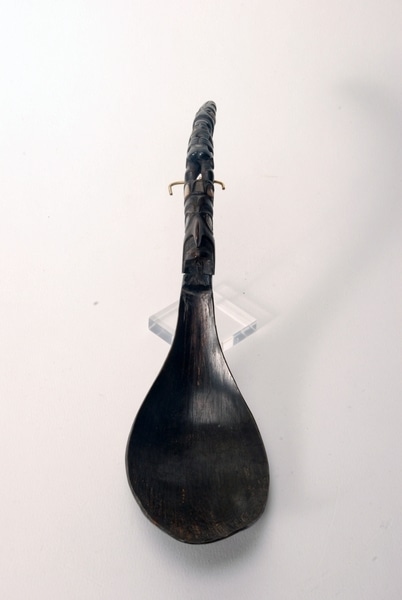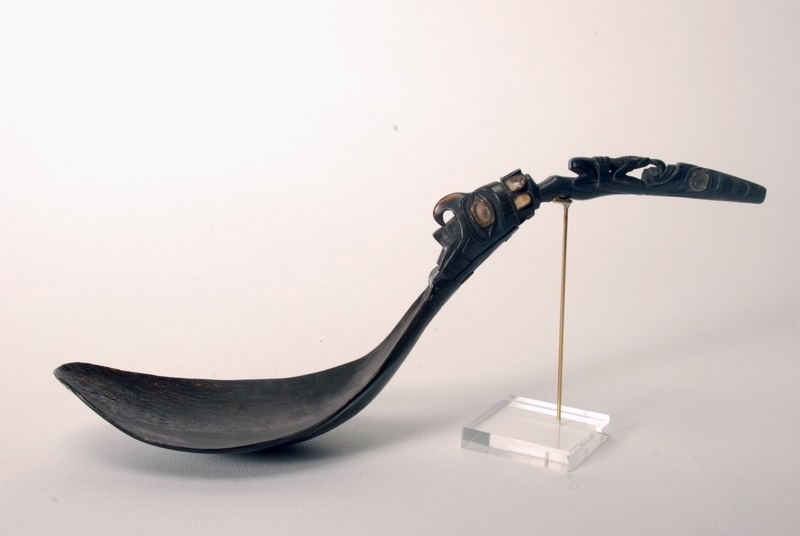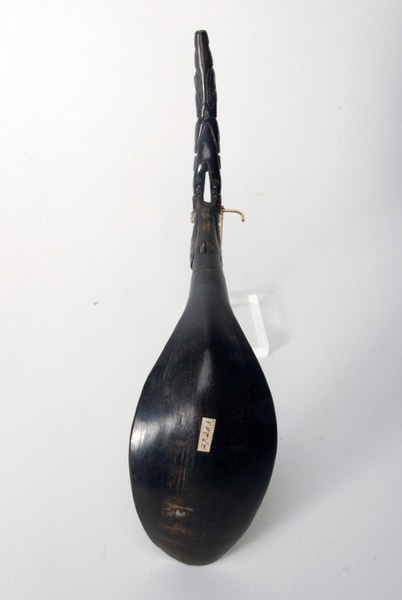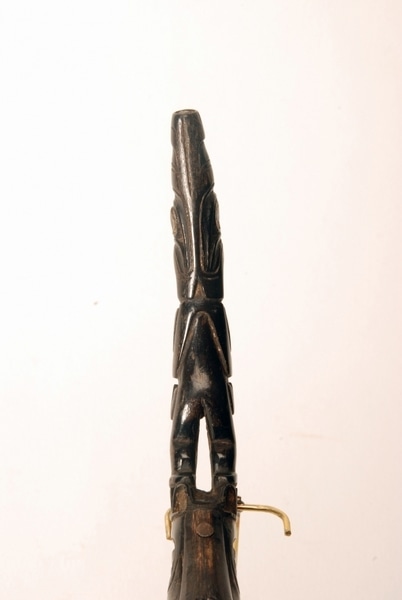Spoon Item Number: 1927.253 from the MAA: University of Cambridge






Description
Spoon of mountain-goat horn with an elaborately carved handle. The humanoid at the tip of the handle has a frog clasped to its chest, with their tongues joined. This figure is standing on an abalone inlaid headdress of a humanoid/bird creature.; Good
Context
The original European tribal names and, where possible, current tribal names have both been given in separate GLT fields. On the catalogue card the following references are cited :- Man, Vol.Vl, 1906 page 145, and Dramas and Dramatic Dances, page 361, fig.76.; The catalogue card provides detail of the debate over the gender of the humanoid. The original label Ridgeway prepared for the spoon stated, A spoon carved with a woman is a crest of a Nass River Tribe (not far from the Haidas) whilst another Nass phratry has a Halibut shaman as the crest. These make good parallels to the woman and the Eagle or Hawk shaman on my spoon. See Edward Sapir' s monograph on Nass River Tribes, Canadian Government Anthropology Series, No.7, page 127. However Ridgeway changed his mind, perhaps as a result of correspondence with Canon Bearlands, and the gender of the humanoid became male. Canon Bearlands wrote from Victoria, B.C, 11th December, By the bye all authorities I have consulted deny the femininity of the person on the spoon I gave you, or the soft- impeachment (?) suggested by her attitude. The hat alone is sufficient to prove the set, they say, and the curious osculation is not anatomy. Such spoons were used at feasts and potlatches, clearly demarcating the elaborate event from the everyday. The crests carved on the handle were possibly those of the owner representing a tangible connection between the lineage and the economic resources consumed during the feasting. The spoons were used for eating oolichan grease, berries, fish roe and fish (G.Crowther).The spoons were made by steaming and shaping the horn.; Exhibited: The catalogue card states, Exhibited Burlington Fine Arts Exhibition of Indigenous American Art 1920, Case A, No.8. . CUMAA new Anthropological displays 1990-.; Collected by: ?Bearlands.Canon
Item History
- Made in British Columbia, Canada
- Received from Prof. Sir. William Ridgeway during 1927
What
- Name
- Spoon
- Identification Number
- 1927.253
- Type of Item
- spoon
- Material
- horn and mountain goat horn
Who
- Culture
- Haida
- Received from
- Prof. Sir. William Ridgeway
Where
- Holding Institution
- MAA: University of Cambridge
- Made in
- British Columbia, Canada
When
- Acquisition Date
- during 1927
Other
- Keyword
- Food Preparation; Ceremonial Objects